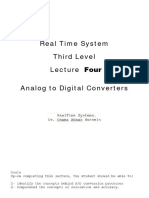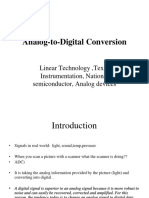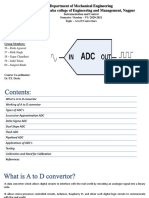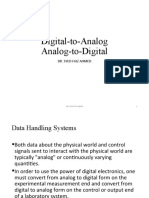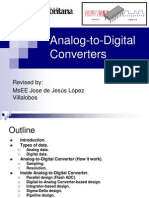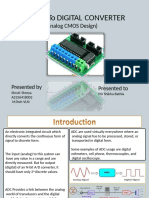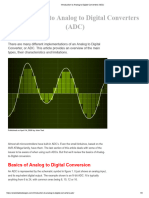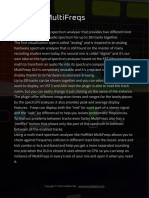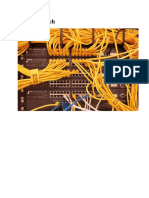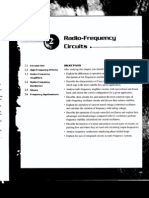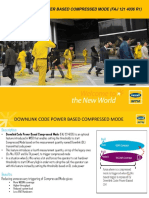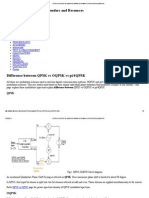0% found this document useful (0 votes)
25 views13 pagesSensor and Instrument Unit 4 Notes (ABESIT)
Unit 4 discusses Data Acquisition (DAQ) systems, which measure physical phenomena using sensors, signal conditioners, multiplexers, and A/D converters to convert analog signals into digital form for processing and display. It covers the roles of transducers, signal conditioning, and various types of ADCs, including Successive Approximation and Sigma-Delta ADCs, along with their advantages and disadvantages. Additionally, it explains Digital to Analog Converters (DACs) and their types, such as weighted resistors and R-2R ladder DACs.
Uploaded by
infoprashantkumarrCopyright
© © All Rights Reserved
We take content rights seriously. If you suspect this is your content, claim it here.
Available Formats
Download as PDF, TXT or read online on Scribd
0% found this document useful (0 votes)
25 views13 pagesSensor and Instrument Unit 4 Notes (ABESIT)
Unit 4 discusses Data Acquisition (DAQ) systems, which measure physical phenomena using sensors, signal conditioners, multiplexers, and A/D converters to convert analog signals into digital form for processing and display. It covers the roles of transducers, signal conditioning, and various types of ADCs, including Successive Approximation and Sigma-Delta ADCs, along with their advantages and disadvantages. Additionally, it explains Digital to Analog Converters (DACs) and their types, such as weighted resistors and R-2R ladder DACs.
Uploaded by
infoprashantkumarrCopyright
© © All Rights Reserved
We take content rights seriously. If you suspect this is your content, claim it here.
Available Formats
Download as PDF, TXT or read online on Scribd
/ 13



